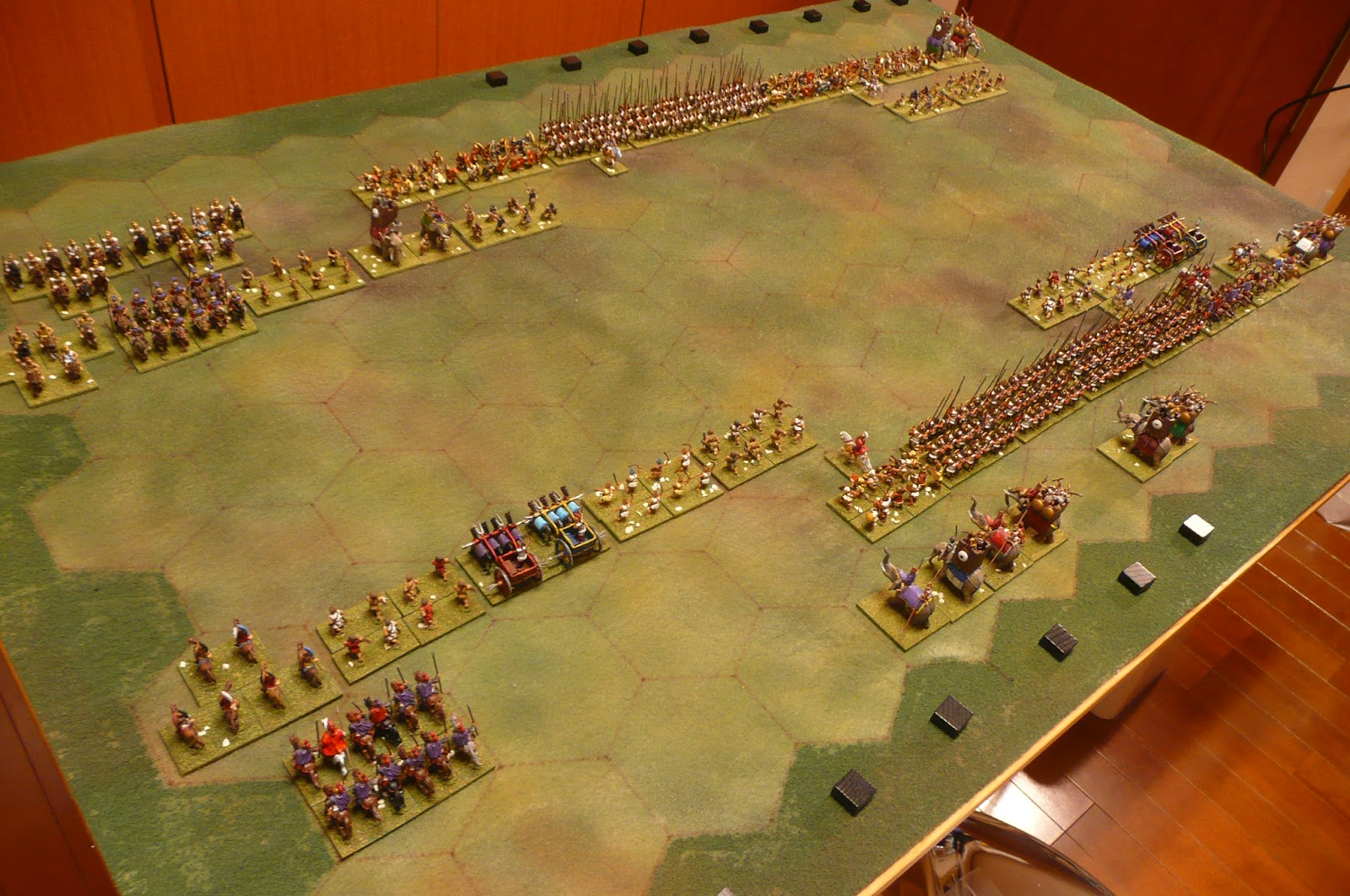It's not a secret that Phil Sabin is one of my favourite game designers. The evolution of my 15mm Ancients figure collection, for example, has been directed primarily by a desire to play Lost Battles. But sometimes it is good to try something different from the norm, and I decided to have a go at one of Phil's earlier designs, Phalanx, published in the Society of Ancients's Journal, Slingshot.
My original plan had been to combine Phalanx with the combat system from another of Phil's games, Legion II, but after setting up thought it was probably best to play Phalanx as-is first: if I'm going to muddle something, it's just as well to have a baseline to allow comparisons.
The first thing you notice is that Phalanx has quite a good selection of scenarios. I hummed and harrred a little, then settled on Heraclea. Pyrrhus would be perfect for my purposes.
For the terrain I am using the Memoir '44 battle board, and for figures I rummaged through the collection. It looks a little cramped, but is not entirely displeasing to the eye (and certainly better than my attempt at making an offset squares mat a few weeks ago!).
In Phalanx the armies deploy from a camp on their baseline, with the Romans moving first in this scenario.
Rome has six units of heavy infantry, two units of light infantry, two units of heavy cavalry and a leader (Publius Valerius Laevinus). Pyrrhus has himself as leader, five units of heavy infantry, two of light infantry, two of heavy cavalry, and an elephant unit.
Once an army has had four or more of its units routed (the general's unit counts as two) at the end of its turn it loses - unless it has fewer units routed than its opponent.
The battlefield is an elongated hex (marked on my board by terrain pieces to indicate the boundary) and the only terrain in play is a river. Both armies deploy out of their camp, so it takes a little time for the armies to close.
 |
| The battlefield from the Roman side after two turns. |
Movement is one hex per turn for most units, but cavalry get to move two. Light infantry and elephants can move two at certain times. There are rules around facing, when units change facing, and whether units can attack after performing a particular move. This all combines to give different units different limitations and give each troop type its own characteristics.
Of course, it takes a little time to assimilate all these characteristics, and while I did not realise it at the time, there were several weaknesses in the Pyrrhic deployment
 |
| Pyrrhus's deployment is not ideal, but he hasn't realised that yet. |
 |
| Enjoy the view while you may, horsemen! |
As with most Phil Sabin games, the nuances of the combat system come out in modifiers. Phalanx is deceptively simple - three units versus an infantry or elephant unit will kill it, while two units versus cavalry will kill it. But there are exceptions: some circumstances add an extra attack unit equivalent; some disregard one. Again, it all takes time and experience to assimilate.
 |
| The lines clash - Rome is about to launch attacks. |
In two more turns it is all over. Rome kills off a unit of cavalry on their left, exposing Pyrrhus. The Epirote army kills a Roman light infantry in its turn; Rome then has the numbers to kill the elephant and Pyrrhus's unit, taking them to four units lost. The Pyrrhus-less Epirotes can only pull back one on their own turn, so Rome wins 4 units to 2, which counts as a sweeping victory.
 |
| Rome has cracked the Pyrrhic centre left, has superiority on the Pyrrhic right, and has killed Pyrrhus. Game over! |





